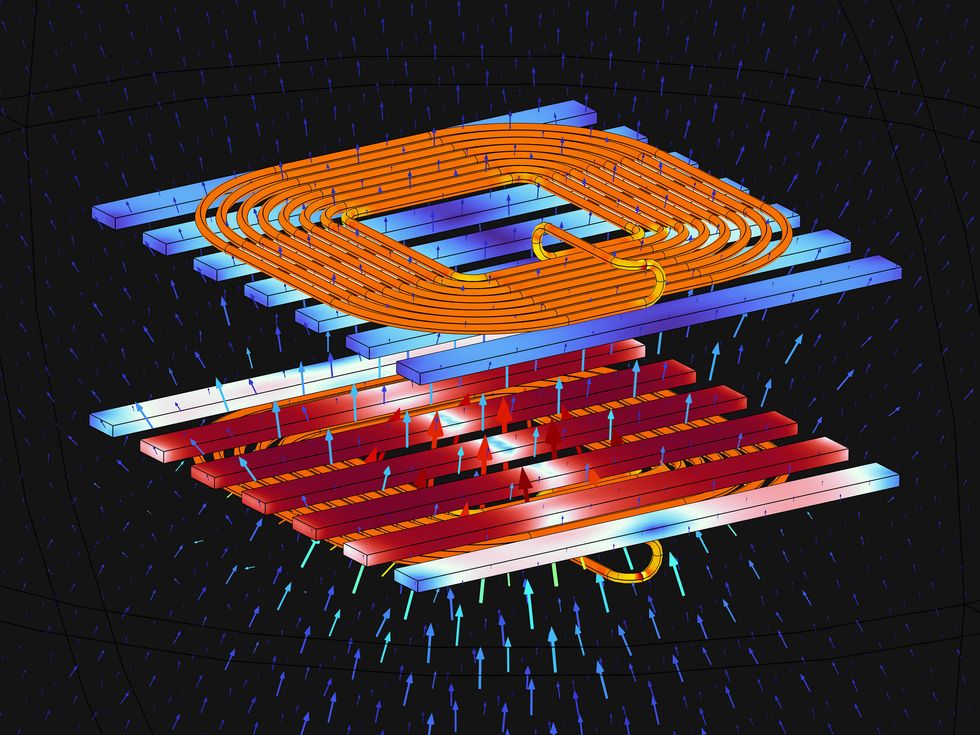World
Multiphysics Modeling Drives Electrification Solutions in Engineering

Efforts to electrify various sectors are facing significant challenges as traditional lab-scale prototypes often fail to perform effectively in real-world conditions. The need for advanced modeling techniques, particularly multiphysics modeling, is becoming increasingly apparent for engineers and developers. This was a key focus at the recent COMSOL conference held in Burlington, Massachusetts, from October 8-10, 2023.
Bjorn Sjodin, senior vice president of product management at the engineering software company COMSOL, emphasized the complexities involved in electrification. “At its core, you have this combination of electromagnetic effects, heat transfer, and structural mechanics in a complicated interplay,” he noted. The company seeks to provide tools that simulate not just individual phenomena, such as the electromagnetic behavior of circuits, but also the comprehensive physics required to develop new technologies under realistic conditions.
During the conference, experts discussed how multiphysics modeling is essential for advancing electrification research and development (R&D). Niloofar Kamyab, a chemical engineer and applications manager at COMSOL, pointed out that while some view simulation as a mere replacement for physical experimentation, it remains a critical complement. “Experiments still need to be done, though experiments can be done in a more optimized and effective way,” she explained.
Batteries are a prime example of where multiphysics modeling can significantly enhance understanding and safety. According to Kamyab, this approach allows for multi-scale analysis of battery systems, facilitating insights that would be nearly impossible to achieve through experimentation alone. For instance, thermal management is a major concern in battery pack simulations, where engineers can recreate malfunctioning cells to prevent dangerous thermal runaway incidents.
The challenges extend beyond batteries. Nirmal Paudel, a lead engineer at Veryst Engineering, highlighted the thermal complexities associated with wireless charging systems. “At higher power levels, localized heating of the coil changes its conductivity,” he stated, which can alter the entire circuit’s performance.
Electric motors and power converters are also evolving to meet the demands of electrification. Vignesh Gurusamy, a senior application engineer at COMSOL, noted that older development methods are becoming less effective. “The recent surge in electrification across diverse applications demands a more holistic approach,” he said, enabling the creation of optimized designs for various technologies.
Freight transportation is another area ripe for innovation. Sjodin explained that discussions are underway about the best power sources for trucks, weighing the merits of batteries against fuel cells. Fuel cells, he noted, are particularly suitable for multiphysics modeling due to their complex interactions involving fluid flow, heat transfer, and chemical reactions.
The electric grid is undergoing a transformation as well. “The grid is designed for a continuous supply of power,” Sjodin remarked. With intermittent power sources like wind and solar, entirely new challenges arise that require advanced simulation techniques.
The conference also showcased innovative applications of multiphysics modeling in automotive engineering. A Berlin-based company, IAV, is developing powertrain systems that integrate various battery formats and chemistries. Kamyab explained that by combining sodium-ion and lithium solid-state batteries, engineers can harness the strengths of each chemistry while addressing their weaknesses through tailored thermal management strategies.
Jakob Hilgert, a technical consultant at IAV, has been involved in developing a dual-chemistry battery pack. He shared insights from a COMSOL industry case study, stating, “Using multiphysics simulation enabled our team to play the two chemistries’ different properties off of each other.” This approach allows for optimized thermal management by transferring heat between cells operating at different temperatures, enhancing overall efficiency.
As Sjodin highlighted, advancements in multiphysics simulation are indicative of a broader trend across industries impacted by electrification. “Algorithmic improvements and hardware enhancements multiply together,” he said, paving the way for more realistic system simulations. Gurusamy noted that innovations like GPU accelerators and surrogate models are driving significant improvements in electric motor efficiency and capabilities.
Even the fundamental components of electric motors, such as copper wire stators, are being optimized through multiphysics modeling. Gurusamy pointed out that enhancing power density and efficiency, while managing thermal challenges, is a key frontier in electric motor development.
The landscape of wireless charging is also evolving, with Paudel reporting that traditional design cycles are giving way to integrated multiphysics platforms. These platforms facilitate the exploration of new charging architectures, including flexible charging textiles and adaptive smart surfaces.
As the demand for higher-capacity batteries continues to rise, the implications extend beyond current industries like consumer electronics and electric vehicles. Kamyab noted that advancements are enabling new applications, such as electric vertical take-off and landing aircraft (eVTOLs). “The reason that many ideas we had 30 years ago are becoming a reality is now we have the batteries to power them,” she stated.
The integration of multiphysics modeling into the electrification process is proving essential, not only for optimizing existing technologies but also for unlocking innovative solutions and applications. As the field continues to evolve, the potential for new technologies seems limitless, driving the electrification movement forward.
-

 Science2 months ago
Science2 months agoUniversity of Hawaiʻi Joins $25.6M AI Project to Monitor Disasters
-

 Business2 months ago
Business2 months agoForeign Inflows into Japan Stocks Surge to ¥1.34 Trillion
-

 Top Stories2 months ago
Top Stories2 months agoBOYNEXTDOOR’s Jaehyun Faces Backlash Amid BTS-TWICE Controversy
-

 World2 months ago
World2 months agoBoeing’s Merger with McDonnell Douglas: A Strategic Move Explained
-

 Top Stories2 months ago
Top Stories2 months agoCarson Wentz Out for Season After Shoulder Surgery: Urgent Update
-

 Entertainment2 months ago
Entertainment2 months agoSydney Sweeney Embraces Body Positivity Amid Hollywood Challenges
-

 Top Stories2 months ago
Top Stories2 months agoMarc Buoniconti’s Legacy: 40 Years Later, Lives Transformed
-

 Lifestyle2 months ago
Lifestyle2 months agoKelsea Ballerini Launches ‘Burn the Baggage’ Candle with Ranger Station
-

 Health2 months ago
Health2 months agoInnovative Surgery Restores Confidence for Breast Cancer Patients
-

 Sports2 months ago
Sports2 months agoSteve Kerr Supports Jonathan Kuminga After Ejection in Preseason Game
-

 Entertainment2 months ago
Entertainment2 months agoZoe Saldana Advocates for James Cameron’s Avatar Documentary
-

 Lifestyle2 months ago
Lifestyle2 months agoDua Lipa Celebrates Passing GCSE Spanish During World Tour









